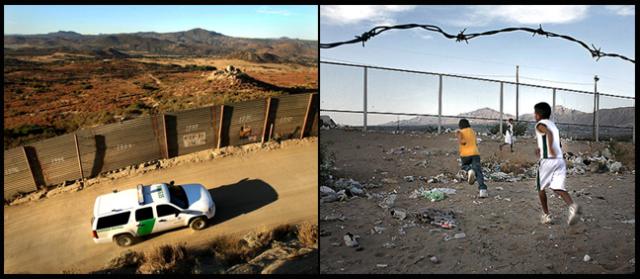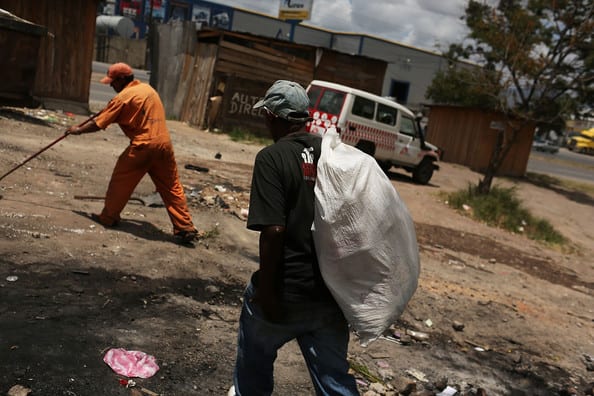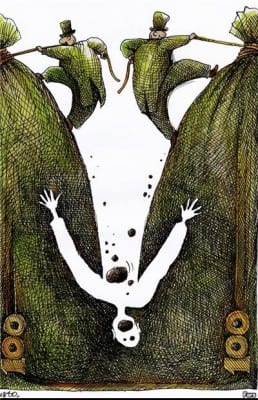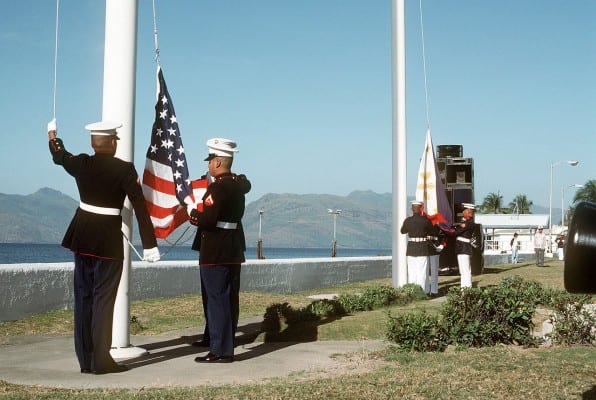Six family members murdered in suburban Houston, Texas
The social pathologies of life under extreme capitalism are never mentioned as the root cause of this recurring plague in America
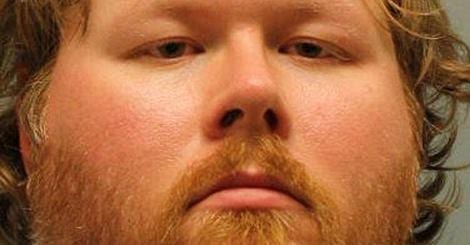
Ronald Lee Haskell—insane or damaged goods beyond repair. But who loaded his guns?
By David Walsh, wsws.org
[T]he latest mass killing in the US took place in Spring, Texas, a suburb of Houston, on July 9. Six members of the Stay family, including four children, aged 13, 9, 7 and 4, were shot in the back of the head while they lay on the floor of their house. The alleged perpetrator, Ronald Lee Haskell, was reportedly looking for his ex-wife, the sister of the wife and mother, Katie Stay, 33, murdered in the incident.
According to the one survivor of the horrible incident, 15-year-old Cassidy Stay, Haskell arrived at the home dressed in the uniform of a package delivery service and asked for her parents. She explained they were not home, and he went away. A short time later he returned and forced his way inside. He tied the girl up and waited for the rest of her family.
When the other five members of the family arrived, Haskell allegedly demanded to know the whereabouts of his ex-wife, Melannie Lyon. When the information was not forthcoming, according to Cassidy, he shot all seven in the head, “execution-style.” The 15-year-old, however, was only grazed by a bullet and alerted police that her former uncle was on his way to kill her grandparents, where his ex-wife and their children were staying.
Police confronted Haskell and after a pursuit of his vehicle, trapped him in a cul-de-sac a few miles away. For several hours the suspect apparently held a gun to his head before eventually surrendering.
On Friday, during a court hearing, Haskell collapsed twice as the charges were read out. He had to be taken from courthouse in a wheelchair. His court-appointed defense attorney, Doug Durham, indicated he was considering a plea of not guilty by reason of insanity.
“Our state and national laws say that a person suffering from a severe mental illness is not criminally responsible if they can’t distinguish right from wrong,” Durham told the media. “He has a history of mental illness.”
Domestic violence charges were laid against Haskell in 2008, while he and his then-wife were living in Logan, Utah. He was accused of dragging his wife out of bed and hitting her on the head several times in front of their children. Haskell pleaded guilty to a simple assault charge and not guilty to the domestic violence charge, which was later dropped. His wife subsequently moved to another location.
In July 2013, Lyon filed a protective order and later reported that Haskell had violated the order on two occasions. She filed for divorce in August 2013 and apparently moved to Texas in early 2014.
On July 2 of this year, Haskell’s mother alleged that her son tied her up and confined her to a computer chair for four hours after she told him she was in touch with his ex-wife. Haskell allegedly threatened to kill her and his entire family. Deputies looked for him, without success. He was next heard of in Texas, after the mass killing.
Haskell’s sister had previously filed a temporary restraining order against him after he allegedly assaulted her. He also stole his father’s guns, which were ultimately confiscated by the San Diego County Sheriff’s Department. As his attorney noted, this history points to a seriously unbalanced individual.
Haskell, born 1980, grew up in Escondido, California, north of San Diego, and spent some time later in the Anchorage, Alaska area. In high school, he was voted the class clown. Haskell worked for a time as a parcel delivery driver for a company contracted to FedEx, but reportedly left that job in January 2014. At the time of the divorce, he was making approximately $27,600 a year.
Real estate broker Stephen Stay, the father murdered in Spring, Texas, and his family had moved from southern California, according to a press account, to be near Katie Stay’s parents and because “the real estate market was better there.” Stay had a realty company registered at his home address. The family were Mormons and, according to neighbors, friendly, pleasant people.
Spring, Texas is a town of 54,000 within the greater Houston metropolitan area, some 25 miles north of the city. A railway center in the late 19th century, Spring’s population had declined to 700 by 1945. The area then grew substantially in the 1970s as Houston’s suburbs moved north. The population is made up of various social layers and ethnicities, including a portion of the affluent upper-middle class.
Where the Stays lived, the Enchanted Oaks subdivision, not far from Interstate 45, is relatively modest, similar to countless other housing developments across the US. Online real estate database Zillow estimates the Stays’ four-bedroom home, built in 1971, to be worth $163,000, half the value of larger houses in other parts of Spring.
Inevitably, the American media has attempted to deflect attention from the especially cruel and disturbing nature of the crime, the latest in an apparently endless series of mass killings, and smother any socially critical thought that such an event might generate, by treating Cassidy Stay as an inspirational “heroine.”
The 15-year-old, who played dead while the alleged killer was still in her house, reacted very much like any human being, fortunate enough to survive such a horrendous episode, would have reacted. One feels for her unspeakably tragic situation, but that a single family member was lucky enough to escape with her life is hardly cause for celebration.
Haskell allegedly committed a terrible, insane crime. But the ultimate responsibility for the increasingly insidious levels of violence in America lies with the powers that be and the social devastation and disorientation they have created. The apparently cold-blooded, “execution-style” character of the murders would be almost unthinkable in any other advanced capitalist country, or in almost any other country at all. The ability to murder five young children (four of them successfully) by gunshots to the back of the skull speaks to a degree of dehumanization that has socially pathological implications.
Mass killings are now so frequent in the US that even the empty, perfunctory White House statement has apparently been discontinued. President Barack Obama, who visited Texas last week, is not on record as making any comment about the atrocity in Spring.
The AFP news service took note of some of the incidents over the past seven weeks alone: “On May 23, a student with mental problems killed six people and then himself in California, while on June 5 a gunman killed one person and injured two others on a campus in Seattle. In June, a couple with possible anti-government militia links shot dead two police and a civilian in Las Vegas, and a teenage gunman shot a 14-year-old student dead at an Oregon high school.”
Two days after the Spring episode, a Pasadena, California resident wielding a rifle allegedly opened fire, reportedly as part of a longstanding tenant-landlord dispute, killing his landlady and two other people.
A political and media elite that lies every time it opens its mouth, a CIA-military apparatus that intervenes anywhere it likes and eliminates anyone it likes, police forces who have the green light to shoot to kill, a society that functions for the benefit of the rich and treats the mass of the population as “losers” who might as well not exist, an entertainment industry that promotes brutality and callousness… these are the general circumstances in which these mad killings occur and will continue to occur.
David Walsh is a cinema and cultural critic for wsws.org. We regard him as one of the best in the nation.
